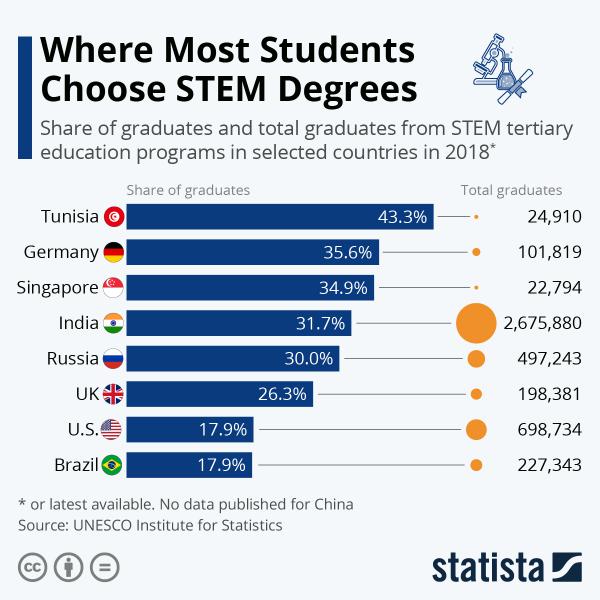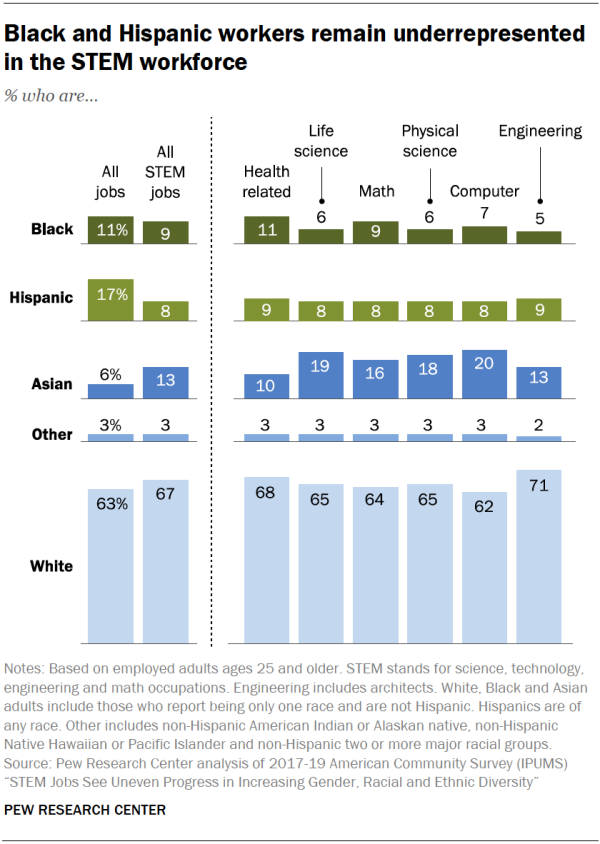Across the country, Americans are recognizing that the country faces a double-edged sword when it comes to the impact of technology on the economy and the job market. While American workers increasingly lose their jobs to technological advances, there is immense growth in positions related to science, technology, engineering and math, or STEM.
In fact, STEM is one of the fastest growing fields from coast to coast. STEM jobs are consistently on the rise. Businesses from Amazon to Lockheed-Martin are taking steps to fill these quality jobs, many of which are well-paid and don’t require college degrees.
“We know STEM is a major job producer,” said Calvin Mackie, founder and president of STEM NOLA and leader of STEM Global Action. “We must continue to increase the STEM skills of our children so they are prepared for the jobs of today and tomorrow. And, we must prioritize locations, such as communities of color, that have historically been under-resourced.”
There are signs that the educators as well as the public and private sector are growing to understand the importance of STEM skills and to keep pace with the rest of industrialized world. The U.S. ranks 30th of 64 countries in math and 11th in science, according to data from the Programme for International Student Assessment. Experts predict there will be 3.5 million unfilled STEM jobs in the U.S. by 2025.
Earlier this year, Google announced flexible online training for technology jobs ranging from IT support to data analytics. Last month, parents in Alexandria, Virginia flocked to an event at the Thomas Jefferson High School for Science and Technology for a virtual fair with STEM enrichment and tutoring providers. This spring, students from New York City to San Francisco are signing up for specialty math and science schools and summer camps, with even the Utah Jazz sending kids to STEM camp. STEM NOLA offers a full slate of summer school sessions.
Bipartisan legislation was recently introduced in Congress to help K-12 schools modernize their math curriculum and improve STEM education. “The United States must lead the world in STEM education…,” said cosponsor Sen. Maggie Hassan (D-N.H.). Jim Baird (R-Ind.), also a cosponsor, said the legislation “provides a much-needed solution to improving the quality of STEM education in America.”
While there is growth, many workers — particularly Blacks, Hispanics and women — are still underrepresented in the STEM workforce. Ten years ago, according to data from the U.S. Census Bureau, Black workers accounted for only six percent of the STEM workforce. That number has increased to nine percent, but it’s still lower than the 11 percent of Blacks in the overall U.S. workforce. Meanwhile, Hispanic workers are seven percent of the STEM workforce, while accounting for 16 percent of all U.S. workers. Pew Research Center noted that while women made significant progress in the life and physical sciences since 1990, the share of women has remained stable in other STEM job clusters. This amounts to slower growth in some of the largest job growth areas, including computer occupations as computer scientists, systems analysts, software developers, information systems managers and programmers.
The gap is not due to a lack of interest in STEM by underrepresented communities. Instead, it’s caused by a lack of effective education and training offered to these communities, bias in the hiring process and a lack of confidence in entering STEM fields. For instance, women state that they often feel discouraged to enter STEM. Research has found that White men would apply to a job if they met 25 percent of listed job requirements, while women generally wouldn’t apply unless they met all job requirements.
To increase the number of Black workers, experts said, more need to apply and recruiters need to target HBCUs – Historically Black Colleges and Universities. More educators and technology experts recognize that students need the type of in-school and after-school programs offered by STEM Global Action through its programs like STEM NOLA in New Orleans.
“While companies must make a greater effort to equalize the hiring process, schools and organizations must continue to bring STEM education to K-12 students in under-resourced communities,” said Lawrence Jackson, STEM NOLA’S chief operating officer. “STEM jobs can help bridge the wealth gap between people of color and Whites.”
The federal government is poised to focus on STEM education. In the 2022 budget, the Biden administration said it would provide $1 billion annually over the next 10 years in mandatory funding under the American Jobs Plan to “expand career pathways for middle and high school students.” The funds would support the “development and implementation of high-quality career pathway programs in middle and high schools, with a priority on programs that connect underrepresented students to STEM and in-demand sectors and help increase the capacity of community colleges to offer high-quality workforce training programs,” including STEM jobs.
The message is clear: STEM is a pathway for employment and advancement in society, and we should all prepare our youth so that they can be a part of this bright future.



